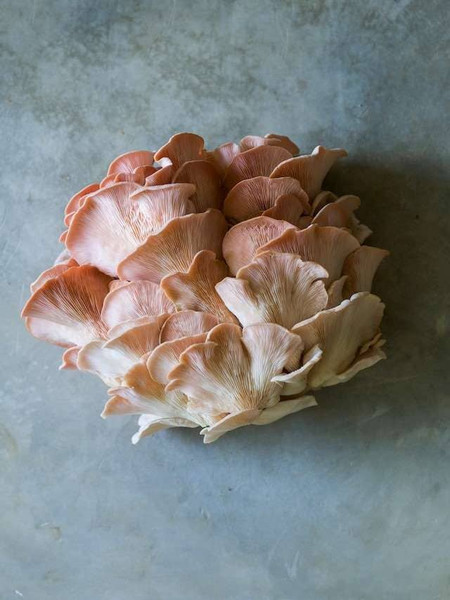How to Cultivate Pink Oyster Mushrooms
Posted by Troy Cosky, Founder FunGuy Grow Supply on 26th May 2023
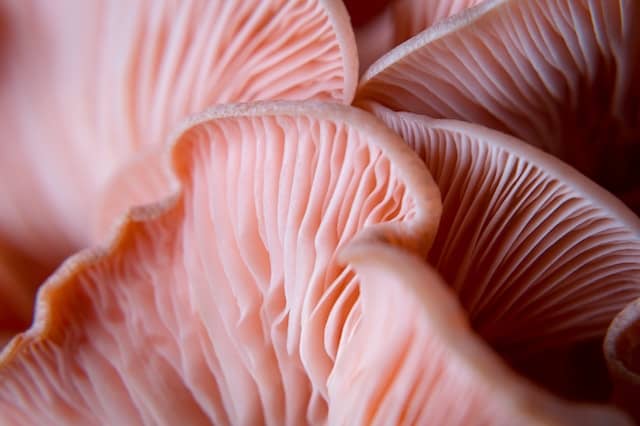
Cultivating Pink Oyster Mushrooms: Complete Guide, Techniques and Benefits
Are you interested in cultivating your own delicious and nutritious pink oyster mushrooms? Look no further! In this complete guide, we will provide you with the techniques and benefits of growing these culinary delights. Discover the ideal conditions, cultivation techniques, potential candidates, and challenges faced in pink oyster mushroom cultivation. We will also delve into the economic aspects, sustainability, and environmental impact. Get ready to embark on a journey of sustainable agriculture and enjoy the rewards of growing your own pink oyster mushrooms.
Key Takeaways
- Pink Oyster Mushrooms are a versatile and nutritious addition to any diet, as they are packed with protein, fiber, and essential vitamins.
- They can be easily cultivated both indoors and outdoors, making them suitable for small-scale growers and commercial growers alike.
- Pink Oyster Mushrooms can be grown using traditional methods, such as substrate bags filled with organic mediums, or innovative methods, such as hydroponics and aeroponics.
- The vibrant pink hue, sweet seafood-like taste, and tender texture of Pink Oyster Mushrooms make them highly desirable in gourmet restaurants and the health food sector.
Introduction: Pink Oyster Mushrooms - Culinary Appeal and Nutritional Benefits
In this section, you will explore the culinary appeal and nutritional benefits of Pink Oyster Mushrooms. These vibrant fungi not only add a stunning touch of pink to any dish but also offer a delightful flavor that resembles that of seafood. Imagine the sensation of a sweet, savory taste that will tantalize your taste buds. But the appeal of Pink Oyster Mushrooms extends beyond their aesthetic and taste. They are packed with nutritional benefits, containing high levels of protein, fiber, and essential vitamins such as Vitamins B and C. These mushrooms are not only a treat for your palate but also a nutritious addition to your diet.
Now, let's take a closer look at the specifications, pros, and cons of Pink Oyster Mushrooms:
| Feature/Aspect | Pink Oyster Mushrooms |
|---|---|
| Scientific Name | Pleurotus djamor |
| Color | Vibrant pink hue |
| Flavor | Sweet, seafood-like taste |
| Texture | Tender and succulent |
| Size | Varies, with caps ranging from small to medium in diameter |
| Pros | |
| Adds a pop of color and unique flavor to dishes | |
| High in protein, fiber, and essential vitamins | |
| Versatile in cooking, suitable for stir-fries, soups, and salads | |
| Fast-growing and easy to cultivate | |
| Can be grown indoors or outdoors | |
| Cons | |
| Can be expensive to purchase due to its gourmet status | |
| Requires proper care and attention during cultivation | |
| May have a shorter shelf life compared to other mushroom varieties |
Ideal Conditions for Cultivating Pink Oyster Mushrooms: Temperature, Humidity, and Lighting
To achieve optimal growth and yield of Pink Oyster Mushrooms, you need to ensure that you provide the right temperature, humidity, and lighting conditions. These factors play a crucial role in the success of cultivating these beautiful and nutritious mushrooms.
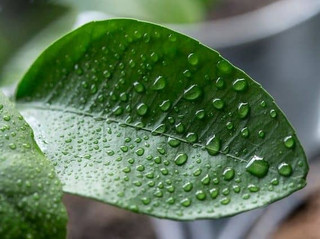
When it comes to temperature, Pink Oyster Mushrooms thrive in warmer climates. The ideal temperature range for their growth is between 20-30°C (68-86°F). It's important to avoid exposing them to colder temperatures or sudden fluctuations, as this can hinder their development. Maintaining a consistent temperature within this range will promote healthy growth and maximize your yield.
Humidity is another key factor in cultivating Pink Oyster Mushrooms. These mushrooms prefer high humidity levels of 70-85%. This is because they naturally thrive in tropical conditions. To maintain the required humidity, you can mist the growing area with water regularly or use a humidifier. Adequate humidity will help the mushrooms retain moisture and prevent drying out.
When it comes to lighting, Pink Oyster Mushrooms can tolerate low-light environments. However, providing them with moderate lighting conditions can encourage optimal fruiting and enhance their vibrant pink coloring. Natural light or artificial lighting with a spectrum of 6500K is suitable for their growth. It's important to ensure that the light source is not too intense or too dim, as this can affect their development.
Cultivation Techniques: Traditional vs. Innovative Approaches
When considering the cultivation techniques for Pink Oyster Mushrooms, you have the option to choose between traditional and innovative approaches. Traditional cultivation techniques involve using substrate bags filled with organic mediums like sawdust or straw. This method is widely used because it is cost-effective, requires low maintenance, and yields a high quantity of mushrooms.
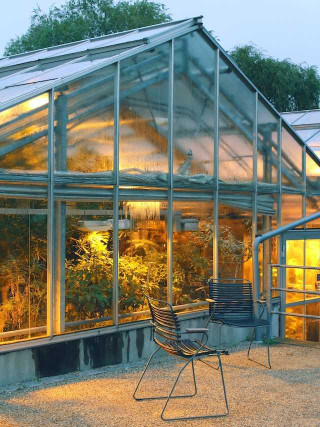
On the other hand, innovative techniques such as hydroponics and aeroponics are becoming increasingly popular among growers. Hydroponics allows you to grow mushrooms without soil by using mineral solutions and water to provide nutrients. This method is particularly praised for producing high-quality and flavorful mushrooms. Aeroponics, another innovative technique, involves growing mushrooms in an air or mist environment, which encourages faster growth and higher yields.
Regardless of the technique you choose, the cultivation process typically begins with inoculation. This is where you introduce spores or mushroom mycelium into the growth medium. After inoculation, the mycelium will colonize the medium during the spawn run period until it reaches maturity for fruiting.
Harvesting pink oyster mushrooms requires inspecting individual oyster clusters for maturity readiness. You'll notice that they exhibit cap flattening and broadening, resembling an umbrella. Under each cap, you'll find little umbrellas instead of pin heads, except in some varieties where they form unique coral-like pieces before fruiting properly. Harvesting can be done at intervals ranging from one week between successive flushes up to several months.
To extend the shelf-life of your harvested mushrooms, it's essential to practice proper post-harvest techniques. This includes storing them at low temperatures, around 3-5 ⁰C, to maintain their meaty texture, aroma, and flavor profile. By doing so, you can maximize your profits as a commercial grower.
Potential Candidates: Opportunities for Small-Scale and Commercial Growers
For small-scale and commercial growers, cultivating Pink Oyster Mushrooms presents exciting opportunities to explore the world of mushroom cultivation. Whether you're a hobbyist looking to experiment with a new pastime or a commercial grower seeking to tap into a growing market, there are numerous advantages to growing these vibrant fungi.
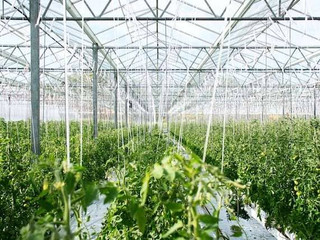
For small-scale growers and hobbyists, cultivating Pink Oyster Mushrooms can be a rewarding experience. With micro-environments, such as indoor spaces or patios, you can create the perfect conditions for mushroom growth. Even with limited space, you can cultivate high-quality mushrooms by ensuring the right temperature, humidity, and light levels. Plus, you have the freedom to experiment with different growth mediums and techniques without making significant financial investments.
Commercial growers, on the other hand, have the advantage of greater resources and market potential. The unique flavor profile and nutritional properties of Pink Oyster Mushrooms make them desirable in gourmet restaurants and the health food sector. As consumers continue to seek out novel culinary experiences, the demand for these exotic mushrooms is on the rise. By investing in Pink Oyster Mushroom cultivation, commercial growers can tap into this growing market and supply high-quality produce.
Furthermore, institutions and researchers can find Pink Oyster Mushrooms an interesting subject of study. These mushrooms are easy to grow in controlled laboratory settings, making them ideal for scientific experiments. Additionally, their mycelium has shown potential in degrading toxins from soil, and they may even possess medicinal properties. The research opportunities are endless for those interested in exploring the unique characteristics and potential benefits of Pink Oyster Mushrooms.
As exciting as the opportunities are, potential candidates must also be aware of the challenges they may face in Pink Oyster Mushroom cultivation. This includes dealing with diseases, pests, and creating optimal growing conditions. Understanding these challenges and finding effective solutions will be crucial in ensuring successful mushroom cultivation.
Now, let's delve into the challenges and solutions in Pink Oyster Mushroom cultivation, including how to combat diseases, pests, and create the ideal growing conditions.
Challenges and Solutions in Pink Oyster Mushroom Cultivation: Diseases, Pests, and Growing Conditions
How can you effectively combat diseases, pests, and create optimal growing conditions in Pink Oyster Mushroom cultivation? When it comes to cultivating Pink Oyster Mushrooms, it is crucial to address the challenges of diseases, pests, and growing conditions to ensure a successful harvest. By implementing proper practices and solutions, you can minimize the risks and promote healthy crop growth.
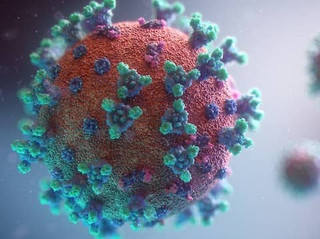
To combat diseases and pests, practicing proper sanitation is essential. This includes ensuring that the growing environment, equipment, and surfaces are free from contamination. Additionally, using sterile culture techniques during spawn production can prevent contamination and maintain the purity of the mushroom culture.
Creating optimal growing conditions is crucial for Pink Oyster Mushroom cultivation. This includes maintaining specific temperature, humidity, light exposure, and carbon dioxide concentrations. Inadequate ventilation and incorrect humidity levels can lead to issues such as slow growth rates and failed fruiting bodies. To address these challenges, investing in high-quality environmental controls is recommended. These controls can monitor and regulate temperature and humidity levels within the grow room, ensuring optimal conditions for mushroom growth.
Additionally, it is important to adapt to different seasons. Cooler months may require additional heating systems to maintain the ideal temperature, while warmer periods may necessitate improved airflow systems to prevent overheating.
The table below provides a visual representation of the challenges and solutions in Pink Oyster Mushroom cultivation:
| Challenges | Solutions |
|---|---|
| Diseases | - Practice proper sanitation |
| - Use sterile culture techniques during spawn production | |
| Pests | - Implement proper sanitation |
| - Regularly monitor and inspect the crops for signs of infestation | |
| Optimal Growing Conditions | - Invest in high-quality environmental controls to regulate temperature and humidity |
| - Adapt to different seasons by adjusting heating and airflow systems as necessary |
Economic Aspects: Market Trends, Costs, and Marketing Strategies
To maximize your success in cultivating Pink Oyster Mushrooms, it is essential to understand the economic aspects, including market trends, costs, and marketing strategies. In recent years, Pink Oyster Mushrooms have experienced a surge in popularity, making them a promising venture for cultivators. The unique color and flavor of these mushrooms, along with their impressive nutritional profile, have made them highly sought after by food enthusiasts and health-conscious consumers.

When it comes to market trends, there is a growing demand for natural and healthy food options. This presents a significant opportunity for Pink Oyster Mushrooms to expand their presence in both local markets and larger retailers. By tapping into this trend, cultivators can capitalize on the increasing consumer interest in these mushrooms.
In terms of costs, startup and operational expenses vary depending on the scale of cultivation. Small-scale growers can start with minimal investment by utilizing cost-effective materials like straw or sawdust as substrate. As cultivators move towards larger operations, expenses increase, but so does the potential for higher yields.
Marketing plays a critical role in the success of Pink Oyster Mushroom cultivation. Building relationships with buyers at farmers' markets or partnering with restaurants that value fresh ingredients are excellent ways to connect with consumers. Additionally, cultivators may consider creating their own brand identity through an online store or social media presence, allowing them to reach a wider audience.
While challenges such as seasonality and shelf-life considerations exist, Pink Oyster Mushrooms offer immense opportunities within the culinary world. These mushrooms can be used in a variety of dishes, ranging from pizzas to gourmet meals found at five-star restaurants. Overall, cultivating Pink Oyster Mushrooms presents great potential for profitability and creativity in the market.
Sustainability and Environmental Impact: Recycling Waste and Soil Enrichment
Maximize the environmental benefits of Pink Oyster Mushroom cultivation by recycling waste materials and enriching soil. Pink Oyster Mushroom cultivation is not only a sustainable farming practice but also offers opportunities for recycling agricultural waste and enhancing soil fertility. By utilizing agricultural waste as substrate, Pink Oyster Mushroom cultivation reduces the amount of waste that would otherwise end up in landfills, alleviating the strain on the environment. This eco-friendly approach helps to minimize overall waste production and its ecological impact.

In addition to recycling waste materials, Pink Oyster Mushroom cultivation offers the advantage of generating minimal waste. Unlike traditional farming practices, this method produces significantly less trash, reducing the need for waste disposal and its associated environmental consequences. Furthermore, Pink Oyster Mushroom cultivation can be carried out in indoor spaces such as basements or garages, requiring minimal light and space, thus reducing the ecological footprint even further.
Another significant environmental benefit of Pink Oyster Mushroom cultivation is the potential for soil enrichment. After harvesting the mushrooms, the spent mushroom substrates can be used as a nutrient-rich compost to enhance soil fertility. This compost is ideal for gardens and farmland, providing essential nutrients for plants and helping to reduce erosion.
Final Reflection: Pink Oyster Mushrooms as a Symbol of Sustainable Agriculture
As you reflect on the journey of cultivating Pink Oyster Mushrooms, it becomes evident that these vibrant fungi symbolize sustainable agriculture and its potential for a greener future. These mushrooms have the power to evoke a sense of hope and inspiration as you witness their ability to transform agricultural waste into a bountiful harvest. Consider the following:
- Resilience: Pink Oyster Mushrooms exhibit remarkable resilience, thriving in various environments and conditions. They teach us the importance of adaptability and perseverance, reminding us that sustainable agriculture requires flexibility and the willingness to embrace change.
- Environmental Conservation: By recycling waste materials such as straw, sawdust, and coffee grounds, Pink Oyster Mushrooms play a vital role in reducing landfill waste and minimizing the environmental impact of traditional farming practices. They show us that even the smallest organisms can have a significant positive effect on our planet.
- Resource Efficiency: Unlike traditional crops, Pink Oyster Mushrooms require minimal resources to grow. They consume less water and land, making them an ideal choice for sustainable farming. Their ability to produce high yields in a small space highlights the importance of maximizing resource efficiency in agriculture.
- Soil Enrichment: As Pink Oyster Mushrooms grow, they release nutrients into the soil, enhancing its fertility and promoting biodiversity. This natural process of soil enrichment is crucial for maintaining healthy ecosystems and sustainable farming practices.
Grow Pink Oyster Mushrooms Today!
Ready to embark on your mushroom cultivation journey? Dive in with our quality at FunGuy Grow Supply. Perfect for beginners or seasoned growers, our kits will help you get started in no time!
mushroom grow kitsFrequently Asked Questions
Can Pink Oyster Mushrooms Be Grown Outdoors?
Yes, pink oyster mushrooms can be grown outdoors. They are a versatile and resilient species that can thrive in a variety of growing conditions. Outdoor cultivation requires a suitable growing medium, such as straw or wood chips, and a shaded area with indirect sunlight. It is important to provide proper moisture, ventilation, and temperature control to ensure successful growth. With the right techniques and care, you can enjoy a bountiful harvest of pink oyster mushrooms in your outdoor garden.
How Long Does It Take for Pink Oyster Mushrooms to Mature?
Pink oyster mushrooms typically take around 4-6 weeks to mature. During this time, they go through various stages of growth, from the initial mycelium colonization to the formation of small pinheads and finally the development of fully mature mushrooms. It's important to provide the right growing conditions, such as proper temperature, humidity, and lighting, to ensure successful cultivation. Patience is key, as the mushrooms require time to reach their full potential and develop their unique flavor and texture.
What Are Some Common Diseases That Pink Oyster Mushrooms Are Susceptible To?
Pink oyster mushrooms, like any other type of mushroom, can be susceptible to certain diseases. It's important to be aware of these common diseases in order to prevent and treat them effectively. Some of the diseases that pink oyster mushrooms can be prone to include bacterial blotch, green mold, and mushroom virus X. These diseases can affect the growth and overall health of your mushroom crop, so it's essential to maintain proper hygiene, ventilation, and temperature control in your cultivation environment.
Are Pink Oyster Mushrooms Suitable for Indoor Cultivation?
Yes, pink oyster mushrooms are suitable for indoor cultivation. They thrive in controlled environments where temperature, humidity, and light can be regulated. Indoor cultivation allows for year-round production and ensures consistent quality and yield. You can easily set up a small indoor mushroom farm with the right equipment and materials. By following proper techniques and providing the necessary conditions, you can successfully cultivate pink oyster mushrooms in the comfort of your own home.
What Is the Average Yield per Square Meter When Growing Pink Oyster Mushrooms Commercially?
When growing pink oyster mushrooms commercially, the average yield per square meter can vary depending on various factors. Factors such as the quality of the substrate, environmental conditions, and cultivation techniques play a significant role in determining the yield. However, on average, you can expect a yield of around 2-4 kilograms of mushrooms per square meter. It is important to note that with proper care, optimal conditions, and experience, you can potentially achieve higher yields.

